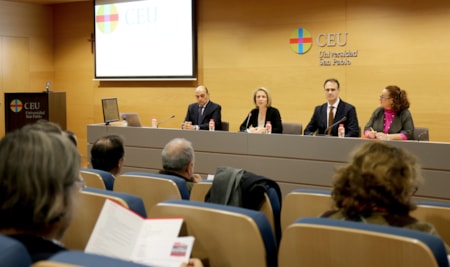
Worker housing is the paradigm
that illustrates the discourse of architecture and urbanism since the beginning
of Modernity. With the aim of conducting a disciplinary analysis of its
evolution, the Department of
Architecture and Design and the
Institute of History Studies held the first International 'Colonies and Worker Housing (18th-21st Centuries)’
Congress within the framework of the
Cátedra Interuniversitaria CEU Silvestre Segarra Aragó de Historia de la
Empresa.
The Congress was a journey from
its origins to the present day, with a focus on the social construction of the
territory, a transversal approach and a multidisciplinary contextualisation. It
was also a projection towards the future and an examination of the challenges
and possibilities presented by existing worker neighbourhoods and colonies, as
well as the new dynamics and transformations of worker housing.
Over two days, various presentations
were organised along three main axes: models and typologies throughout history,
their transversal perspective, and the regeneration and future of worker
neighbourhoods. They addressed the appearance and evolution in their historical
context, and the development and comparison of architectural techniques and
models, such as urban intervention strategies in the city or in the territory. They
explained perspectives from the social construction of the territory to
anthropological readings and contextual interpretations from sociology,
economics, demography, or geography. They also presented future visions of
worker housing and various challenges: socio-economic challenges in changing
demographic environments on the outskirts of cities, technical challenges
regarding the need for energy and construction rehabilitations, and urban
challenges in contexts of urban transformation.
The University Rector, Rosa Visiedo, inaugurated the Congress
together with the Porcelanosa advisor and promoter of the CEU Silvestre Segarra
Aragó de Historia de la Empresa, Silvestre
Segarra, the Director of the Institute of Technology, Santiago de Molina. The event featured experts such as professors Carlos Sambricio and Luis Moya, as well as architect Judith Ryser, a professor at University
College London.